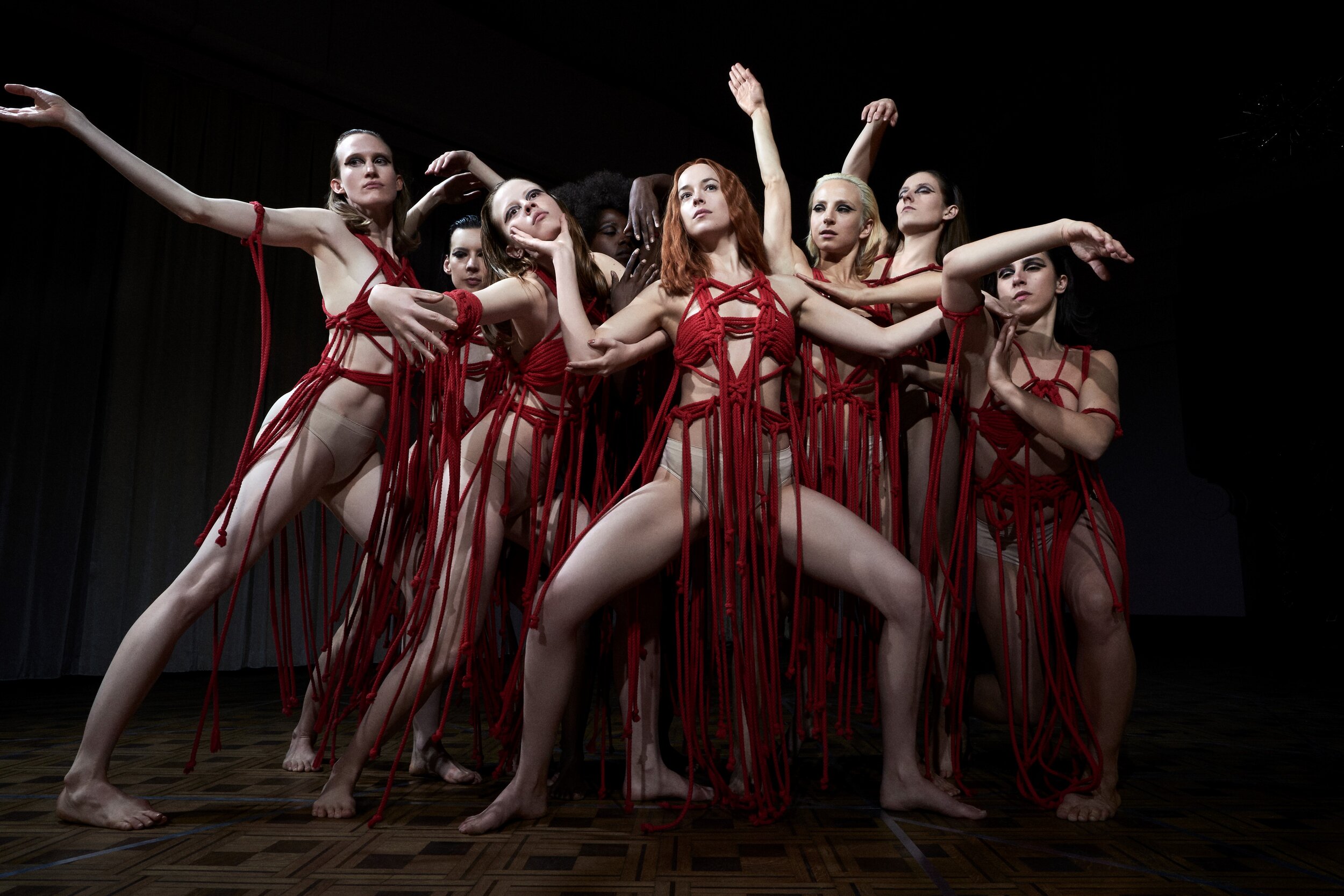Empty Yourself So Her Work Can Live Within You: Mothers and Daughters in Suspiria (2018)
Whilst the image of the witch has permeated culture as a haggard, ugly woman who is hellbent on causing destruction with her spells, popular depictions of witches have mostly been neutralised as western culture has embraced wicca as a legitimate belief system. It's no longer a character trope that writers are scared to imbue with positive connotations, even in horror. Within the genre, the character of the witch has undergone a transformation, often keeping the same enemy - that being patriarchy - only this time, magic is a way to navigate and outwit oppressive power structures, rather than it being the cause of their descent into madness and devil-worship.
Suspiria (2018) has an interesting legacy, with it being a remake of Dario Argento's 1977 horror classic, as well it offering a complex and often chaotic depiction of witches. It brings forward ideas of matriarchy in a very insular way, choosing to mostly ignore Christianity or patriarchy as a potential antagonist of the film, typical of this genre, and instead choosing to focus on the way these women use their powers to harm one another in their pursuit of ultimate leadership. As Leo Braudy discusses, the world of witches is often represented as an inversion of 'the world of religious orthodoxy', and by prioritising matriarchal power over that of God, Christianity was easily able to link evil with womanhood, and more specifically, motherhood. Barbara Creed even explains that a 'mother's curse' was considered the worst spell to cast, in that it 'meant certain death'. However, the men abused in this film seem incidental in comparison to the grave amount of gore and death the witches inflict on one another.
This film is about lineage, about mothers and daughters, and how they learn from one another. At the beginning of the film, Madame Blanc acts as a surrogate mother to Susie, whose own mother recently died. Their connecting factor is dance, with the movement of Susie's body becoming an intense source of freedom for herself, a sensual escape from her previous life, which is only depicted briefly but is shown to be repressive.
She is able to lose herself, often appearing one-dimensional, as she is not so much a person but a vessel for the mothers' power. As Blanc explains, in order to dance her part in the best way, she must empty herself and allow the role to consume and live within her. In turn, Susie, without her knowledge, becomes a major source of physical and emotional pain for the other girls, the most gruesome example being Olga, whose body is twisted and torn apart as Susie dances for Blanc. She is the favourite daughter and because of this, the other dancers are pushed aside so that Susie can be groomed for her role.
The film is able to convey a parasitic relationship between mother and daughter, with the child forgoing bodily and mental autonomy to allow the parent to live out their fantasies of power in a younger body. This is then complicated by the ongoing opposition between the two mothers leading the dance company, Madam Blanc and Madam Markos. Blanc is a physical presence, moving amongst the girls to guide them in their dancing journey, whereas Markos is a malevolent force, haunting the building and only appearing at the end of the film as a rotting body, unable to live in the human world without acquiring the vessel’s power first. Their "parenting" styles, one of brute force and the other of gentle grooming, come from the same place and are both equally harmful. Even more, they are both ineffective, being trumped through usurpation by the truly powerful one: Susie.
Markos and Blanc's power is shown to be false and are ultimately destroyed in the final scenes. Seeking to invert the power structures of the dance company as well as the rigid boundaries of the parent/child relationship, Susie is revealed as the true Mother Suspiriorum. Through acquiring ultimate power, Susie is able to do the one thing that neither mother was willing to do, which was to be merciful. They instead kept many of the girls in an undead limbo, where they were no longer of use to the company but they weren't allowed to die either. Susie gives them this luxury, severing the abusive hold Markos and, to a lesser extent, Blanc had on them, letting them die and take with them the pain of not being the chosen one.
Away from the glaring eyes of patriarchy, the characters in Suspiria are able navigate the horrors of true matriarchy, and how this maps onto to the supposedly natural roles of parent and child. What Susie gains is not just leadership but autonomy, gaining power that is hers and dismantling what was ultimately oppressive. The category of daughter is transformed into the mother because of choice as opposed to expectation, with Susie refusing to emulate the evils of the outside world and instead prioritising the freedom magic can bring.
Sources:
Leo Braudy, Haunted: On Ghosts, Witches, Vampires, Zombies, and Other Monsters of the Natural and Supernatural Worlds (New Haven: Yale University Press, 2016).
Barbara Creed, 'Woman as Witch', in The Monstrous Feminine (Oxon: Routledge, 2007), pp. 73-86.

